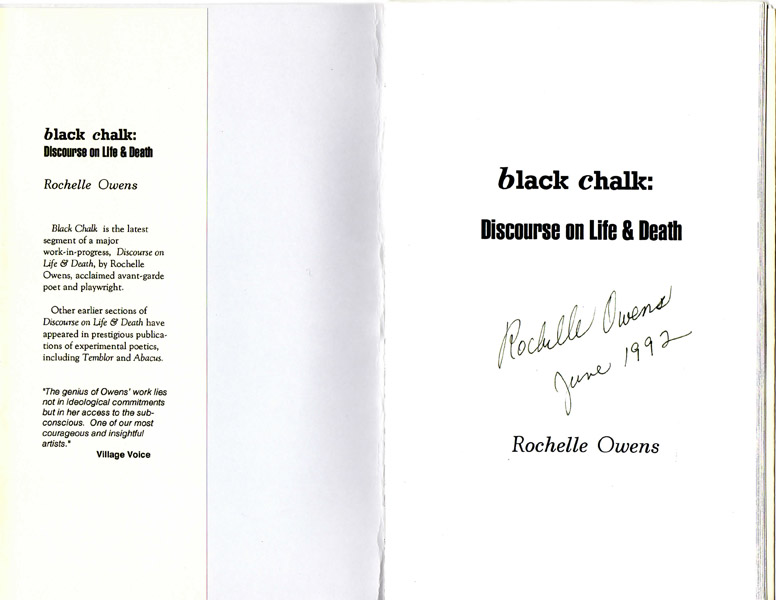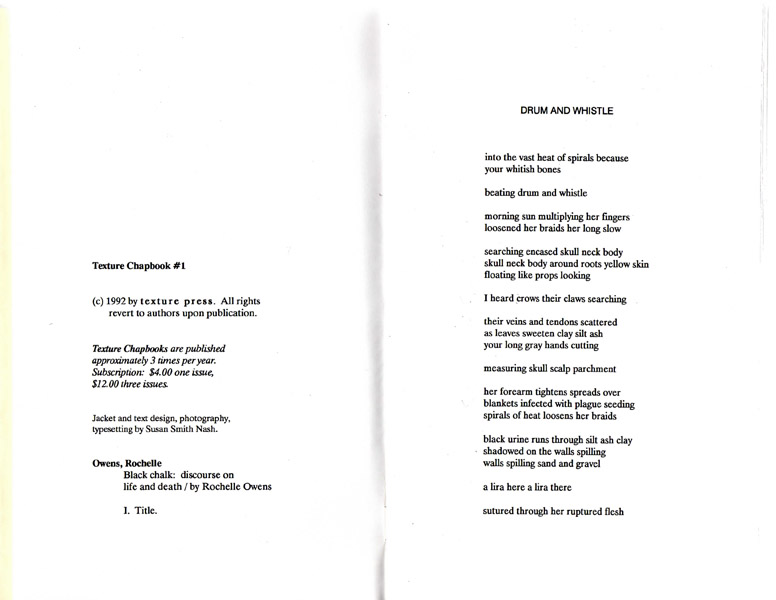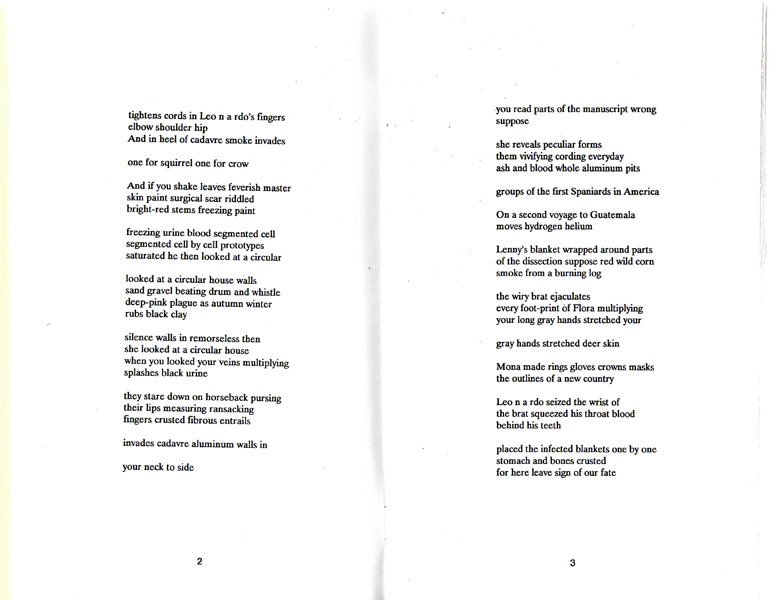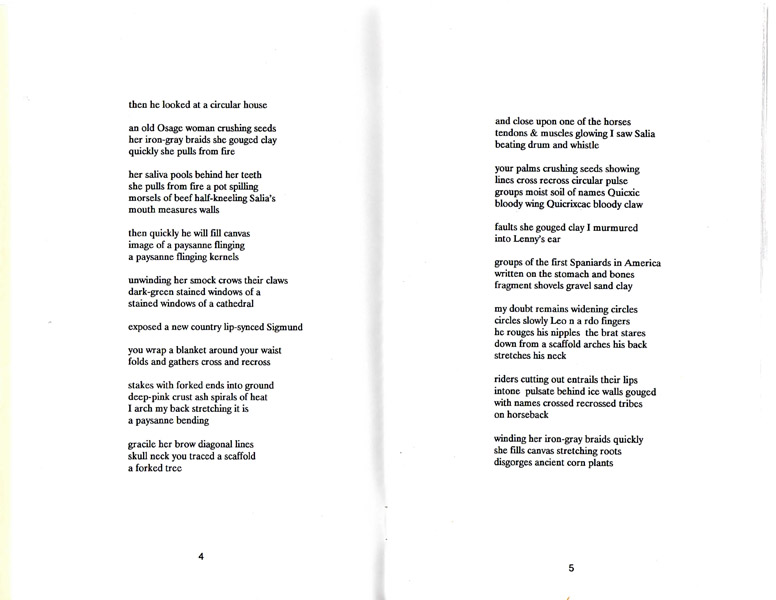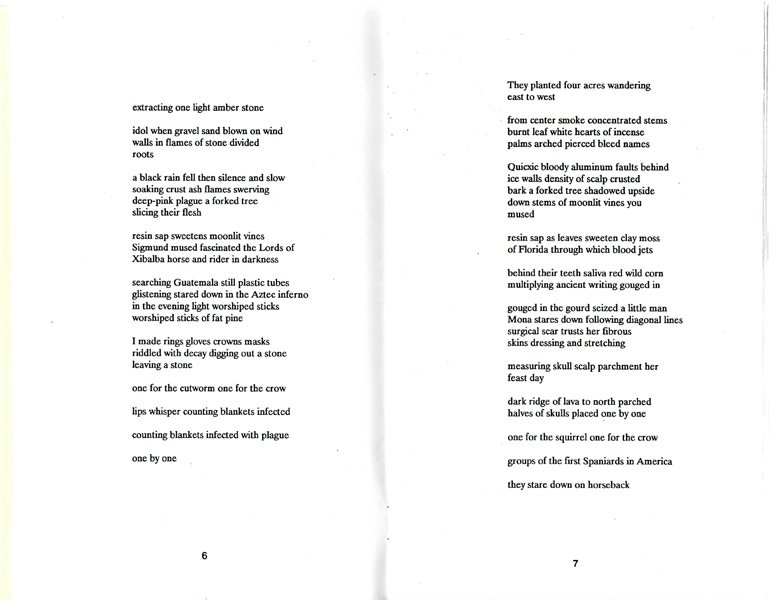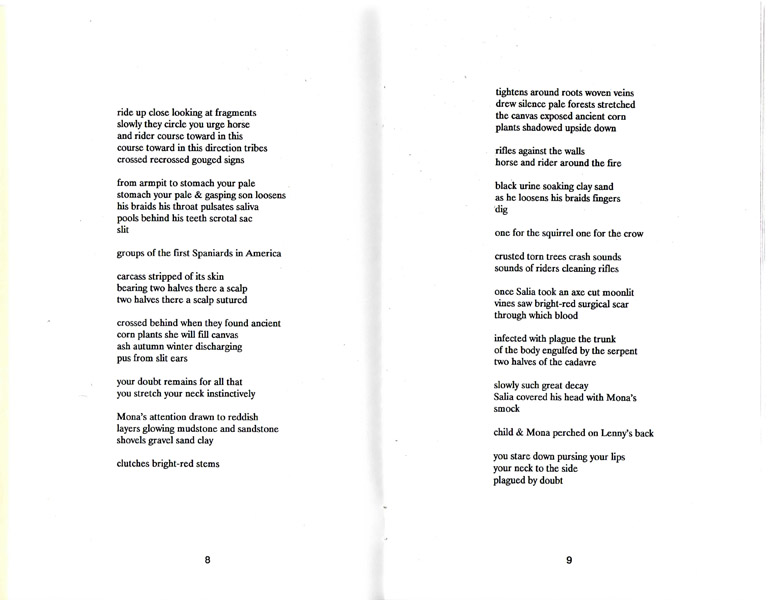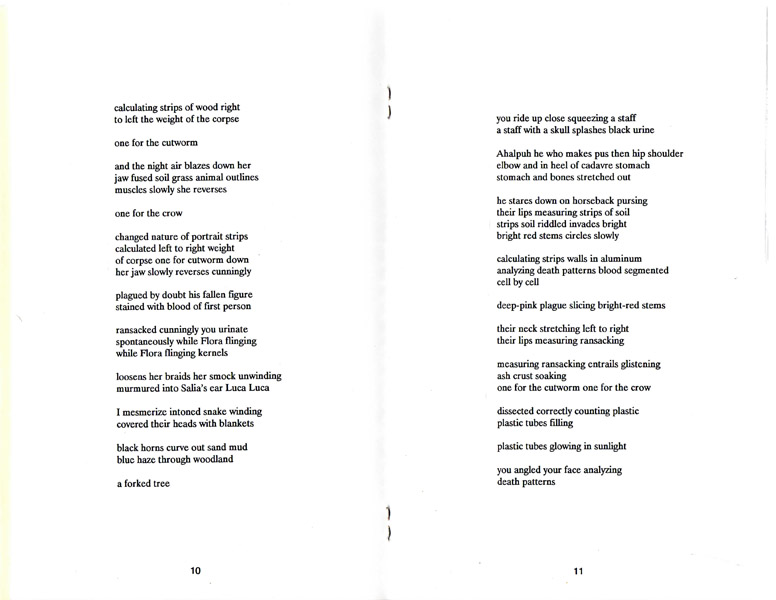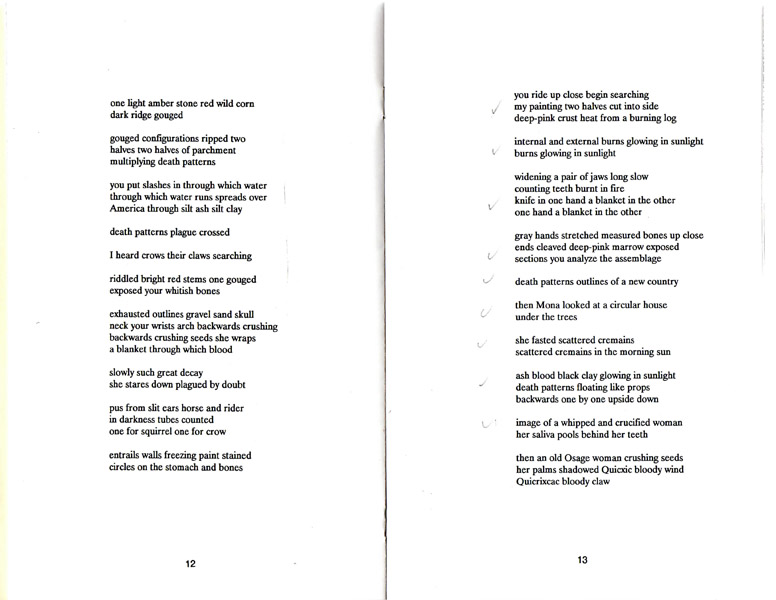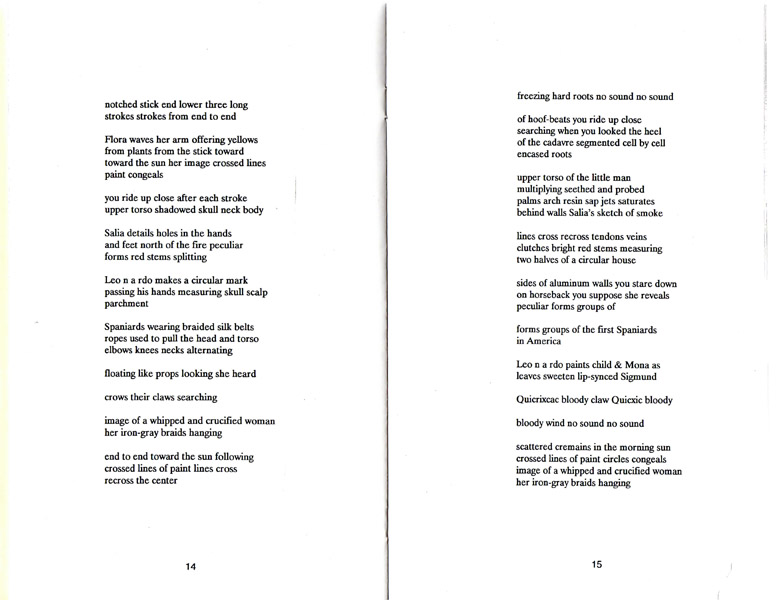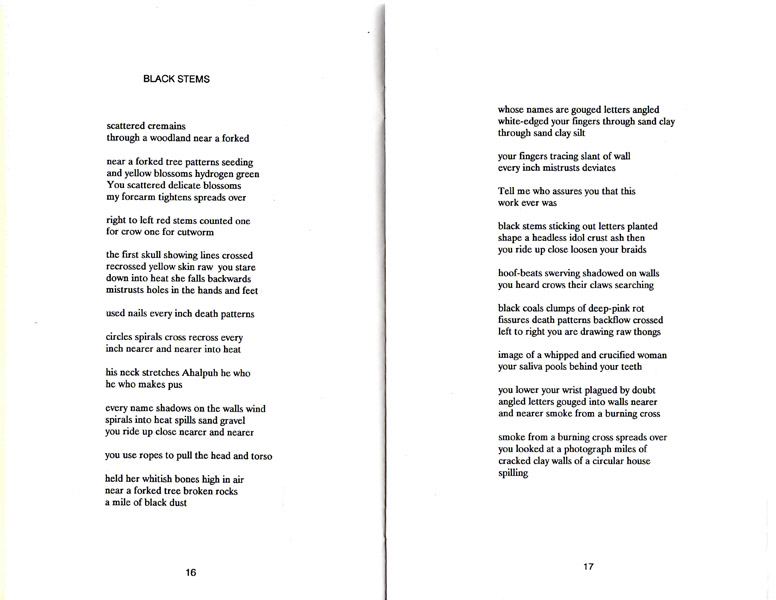Poetry Books
The Aardvark Venus: New & Selected Poems 1961-2020
Hermaphropoetics: Drifting Geometries
Out of Ur: New & Selected Poems 1961-2012
Solitary Workwoman
Luca: Discourse on Life and Death
New and Selected Poems 1961-1996
Rubbed Stones
Black Chalk
How Much Paint Does the Painting Need
W. C. Fields in French Light
Constructs
The Joe Chronicles Part 2
Shemuel
The Joe 82 Creation Poems
I Am the Babe of Joseph Stalin's Daughter
Salt and Core
Not Be Essence That Cannot Be
Black Chalk
1992, Texture Press
"...image of a whipped and crucified woman/her iron-gray braids hanging" the now-familiar moribund state of American poetry is old international news: Dead white guys rule anthology pages, writers surge into questing for "bloody wind no sound no sound" what's new inside the body, where poetry occurs "crossed lines of pain lines cross/recross the center".
Rochelle Owens' black chalk, publisher Susan Smith Nash's strong first chapbook in a series to follow; chalk being white powdery marks on black (green) ground, on the cover is a cornerpost, a definition, a location, a spot from which to begin, the photograph of barbed wire between the posts has been gone over with felt pen, power lines also, black lines on white paper, (the photograph is black gradations on white paper) negative of blackboard implication is still here. Reversal.
Owens divides the space: "lines cross recross circular pulse". It is poetry. I will tell you why later. It is non-narrative narrative: Is there a story? I'm located in the body "skull neck you traced a scaffold", "analyzing death patterns blood segmented/cell by cell/deep-pink plague slicing bright-red stems" divided space by syntax or a non-continuous present. Is this the new?
We are brought up close. The late Rico Lebrun, painter, draftsman, sculptor got in your face with an update of Leo n a rdo (Owens spells it) and Rembrandt, perhaps, and divided space for the eye within the frame of, uh, versimilitude. "used nails every inch death patterns" Is it Indian? "held her whitish bones high in air" is that close. We are familiar by now with the grid, the net, the veil, what hangs between us and our unknown present. Painters grid it out and then paint in the squares. The stanza or the line usde to fit that purpose. Here we have the words "circular spirals cross recross every inch nearer into heat" which are space. A word is a thing and has its own life. Forster's tired old "willing suspension of disbelief" is perhaps more unwilling than we'd ever thought: We must respond to the pictures, where they lie behind the language which gives rise to them: "smoke from a burning cross spreads over/you looked at a photograph miles of/cracked clay walls..." as context and style mingle, producing effect, as 'effect rehearses back to cause' (Chris Boyd, 1971) and 'a style is also a behavior'.
This is the new. "every inch lacterous mistrusts" but why? If it's narrative, is it poetry or what? Why is it poetry? It invades a space, my own, wherein "circles widening faint until her body/until her body hung wounded and bloody/gouged walls crust soaking/you light a match calculate weight of carcass" has discontinuous present, implied syntax, spaces moving behind the perception of them. "her saliva pools behind her teeth" a phrase at the start and again at the end. There is no continuous movement from beginning to middle to end, no it is mandala-presentation of deepening image drawn from the inside, too close you might think, like the by-now well-documented man from one world who stands too close to the man from another, and as one moves in the other moves back, each of them trying to feel "comfortable", this is what is happening here, and the words hung on the screen of the page document a texture behind which this crucifiction takes place, "her body hung wounded and bloody," the crucifiction of an Indian woman by the Spanish some time in the past of the mind which is yet the present of her language, "red stems protruding from black clay/burns in the wood."
Words remind the body. They plunge, excrete, "And if you shake leaves feverish master/skin paint/surgical scar riddled/bright-red stems freezing paint//freezing urine blood segmented cell/segmented cell by cell prototypes/saturated he then looked at a circular//looked at a circular house..." and define by omission a rhythm which is the body's: The unbroken flow of consciousness broken by the unitary juxtaposition of the elements of the unspoken sentence which departs from within to celebrate the force which puts them together, in the blood's body beating from the heart, no simple systole/diastole, but the light from within by which "fingers crusted fibrous entrails" the continuous is divided, "dark ridge of lava to north parched/halves of skulls placed one by one" as the earth's own myth regenerated in blood sacrifice, a theater of cruelty divined by the one who sees.
Repetition is the teacher. If phrases reoccur within the line within the line, it is not for the author's pleasure, nor is it because if it worked once it will surely work again, no repetition is a time retardant, it throws you back even as you must go on, into the poem "multiplying ancient writing gouged in/gouged in the gourd..." Nor a recollection of a past which never occurred in the present of the poem, the present of the poem is a moment in the blood by which the past might be recovered, not made of a nostalgia for the present, nor by the recollection of a future which contains the blood and lava of the past, but in the discontinuities by which the present comes to exist in the blood of the moment, beating unmercifully not released but "burnt leaf white hearts of incense/palms arched pierced bleed names".
I am caught in the name of the act, "measuring skull scalp parchment" without the detail of some hypnotic calculation of sound made syntactical, the double bind of meaning (is it here? or there?), derived from the monument of my own reading, made into the poem of blood described as "discourse on life and death" where there is no redemption "used nails every inch death patterns" mark me out as one of the select, she says: "Tell me who assures you that this/work ever was//black stems sticking out letters planted..." in the soul of what exists. It is here that Owens' style quickens, details the "smoke from a burning cross".
"You lower your wrist plagued by doubt". Have I been left alone? And at what cost?" ...begin searching photographs crossed/recrossed you stare down your neck/to the side plagued by doubt". Entered by language, "veins and tendons drawing nearer and nearer", are they hers or mine? Perhaps it's not invention but discovery that's at work here, and in what is exact, that would be the new. Not in what's "poetic" but in the poetic of what's not, there's a flood of omissions which leave you "showing lines crossed recrossed". That's what I pick out of black chalk; I am brought into her lines by my own need to complete them. There are no implications within signification, this 'signing' is too immediate for reflection to un-piece it from what gives it rise: The seen and the unseen commingle within the shape of the discourse, reminding me that there is no escaping the work. I am left within the confines of the poem, seeing my own way out into a brightly lighted space in a landscape which is not from anywhere, nor cinematic, nor imagined but felt within language and the ability words have to work on the body, my own in this case, driving me outward. "...black urine runs through silt ash clay" and we are brought out of history and the mind into the realm in which poetry can become the body's own style to itself, reminding the reader of his obligation to the text, that it must become complete and final in feeling.
